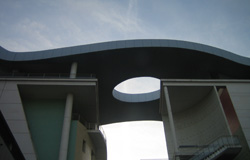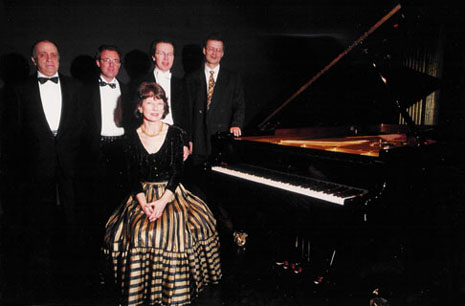Welcome to Harmonic Piano Pedal!

The harmonic pedal is a fourth pedal for the piano which makes it possible to adjust the sound length, with a new damper arm nose.
· Pedal half pushed: all the dampers rise up, but only the dampers of the played notes come back on the string, one by one, at the release of the key: it is the remanence effect, or the sympathetic reverberation.
· Pedal completely pushed: all dampers stay raised up : it is the resonance effect, which is also provided by the classical forte pedal.

(from left to right) Martial Solal / Huseyïn Sermet / Georges Pludermacher / Denis de La Rochefordière / Anne Queffélec
This ability to play dampered notes using remanence while keeping notes stored in resonance is a new pianistic tool. It offers the advantages of the sostenuto pedal, plus the remanence new sound.
It also makes it possible to solve difficulty in playing challenging pieces of the entire piano repertoire. The working of the three classical pedals remains unchanged. The harmonic pedal is placed on the far right of the lyra.
The harmonic pedal, invented by Denis de La Rochefordière, is patented in Europe, Usa, China, Japan, Korea,...